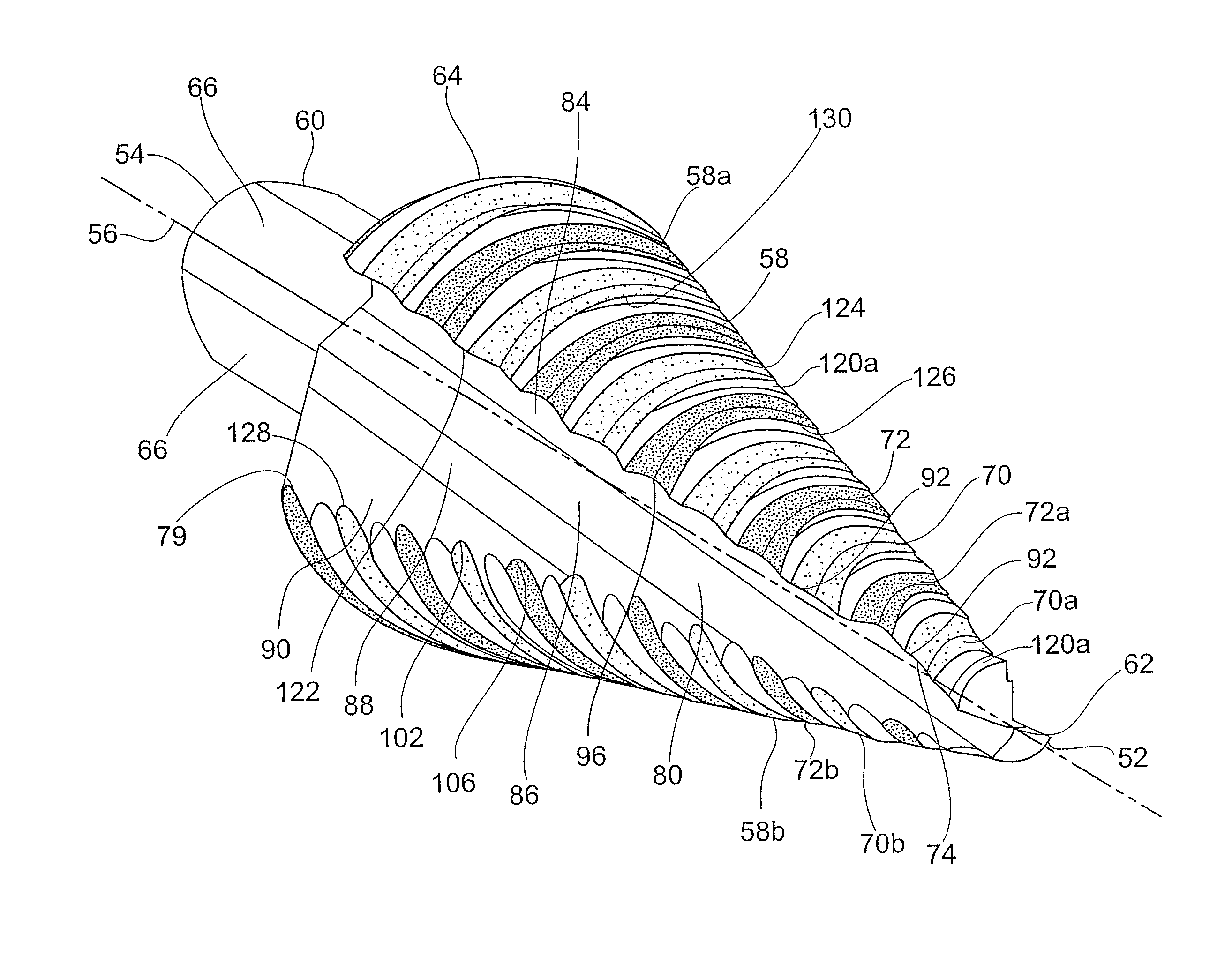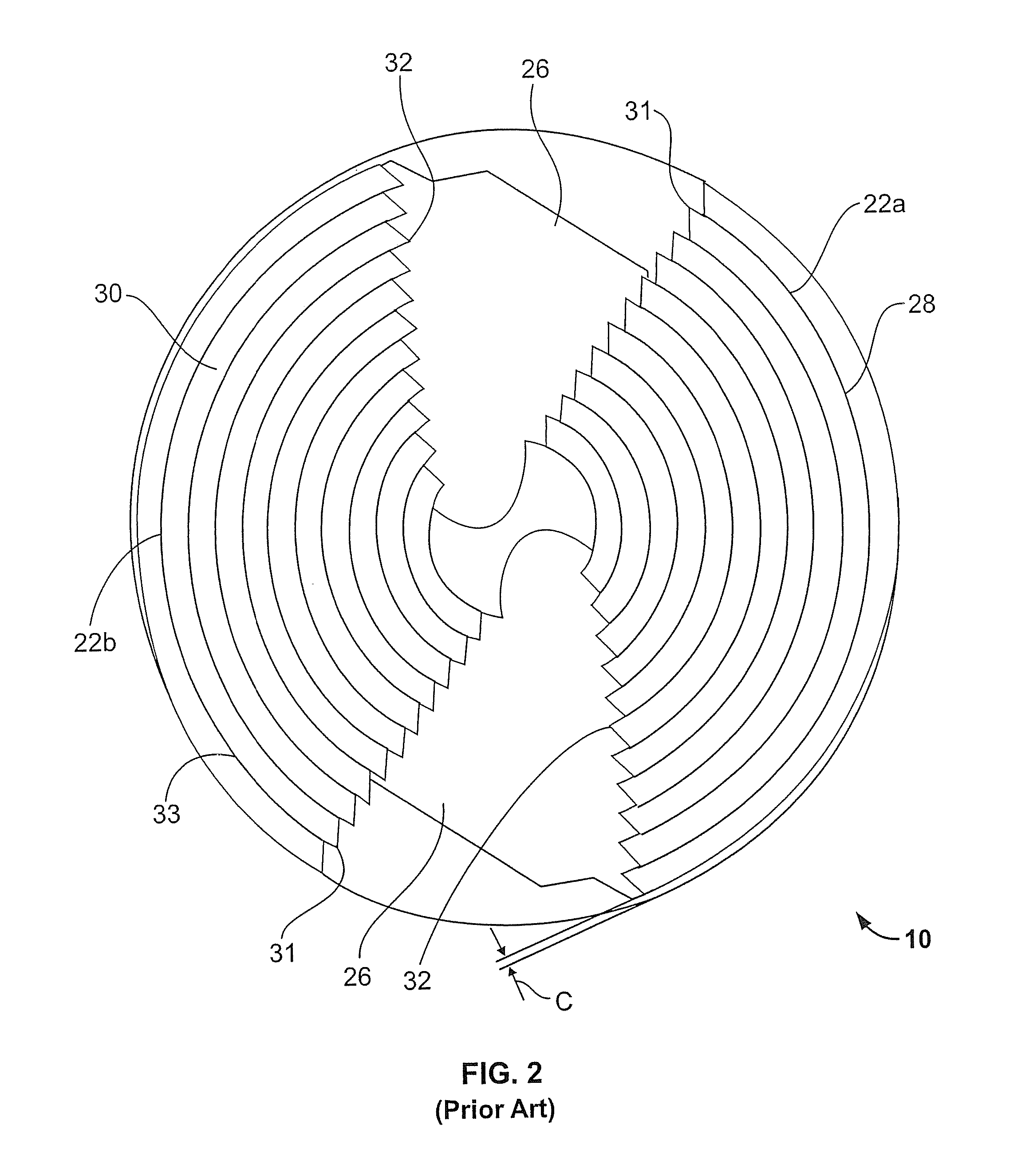Spiral drill bit and method of forming same
a drill bit and spiral technology, applied in the field of spiral drill bits, can solve the problems of wasting time and money in the field, reducing requiring a considerable amount of force to grind all three types of clearances onto the step drill bit, so as to reduce the time and cost of forming the spiral drill bit, reduce the amount of grinding, and reduce the effect of cutting the workpi
- Summary
- Abstract
- Description
- Claims
- Application Information
AI Technical Summary
Benefits of technology
Problems solved by technology
Method used
Image
Examples
Embodiment Construction
[0023]While the invention may be susceptible to embodiment in different forms, there is shown in the drawings, and herein will be described in detail, a specific embodiment with the understanding that the present disclosure is to be considered an exemplification of the principles of the invention, and is not intended to limit the invention to that as illustrated and described herein.
[0024]As best illustrated in FIGS. 4 and 5, a spiral drill bit 50 includes a generally conically-shaped main body 58 extending from a tip 62 at a front end 52 to a rear wall 64, and a shank 60 extending from the rear wall 64 of the main body 58. The tip 62 provides a split drill point. The end of the shank 60 defines a rear end 54. A central axis 56 extends from the front end 52 to the rear end 54. The rear wall 64 is perpendicular to the central axis 56. Flats 66 are provided on the shank 60 and provide driving surfaces for rotation of the spiral drill bit 50 when mounted within the chuck of an associat...
PUM
| Property | Measurement | Unit |
|---|---|---|
| Angle | aaaaa | aaaaa |
| Angle | aaaaa | aaaaa |
| Angle | aaaaa | aaaaa |
Abstract
Description
Claims
Application Information
 Login to View More
Login to View More - R&D
- Intellectual Property
- Life Sciences
- Materials
- Tech Scout
- Unparalleled Data Quality
- Higher Quality Content
- 60% Fewer Hallucinations
Browse by: Latest US Patents, China's latest patents, Technical Efficacy Thesaurus, Application Domain, Technology Topic, Popular Technical Reports.
© 2025 PatSnap. All rights reserved.Legal|Privacy policy|Modern Slavery Act Transparency Statement|Sitemap|About US| Contact US: help@patsnap.com



